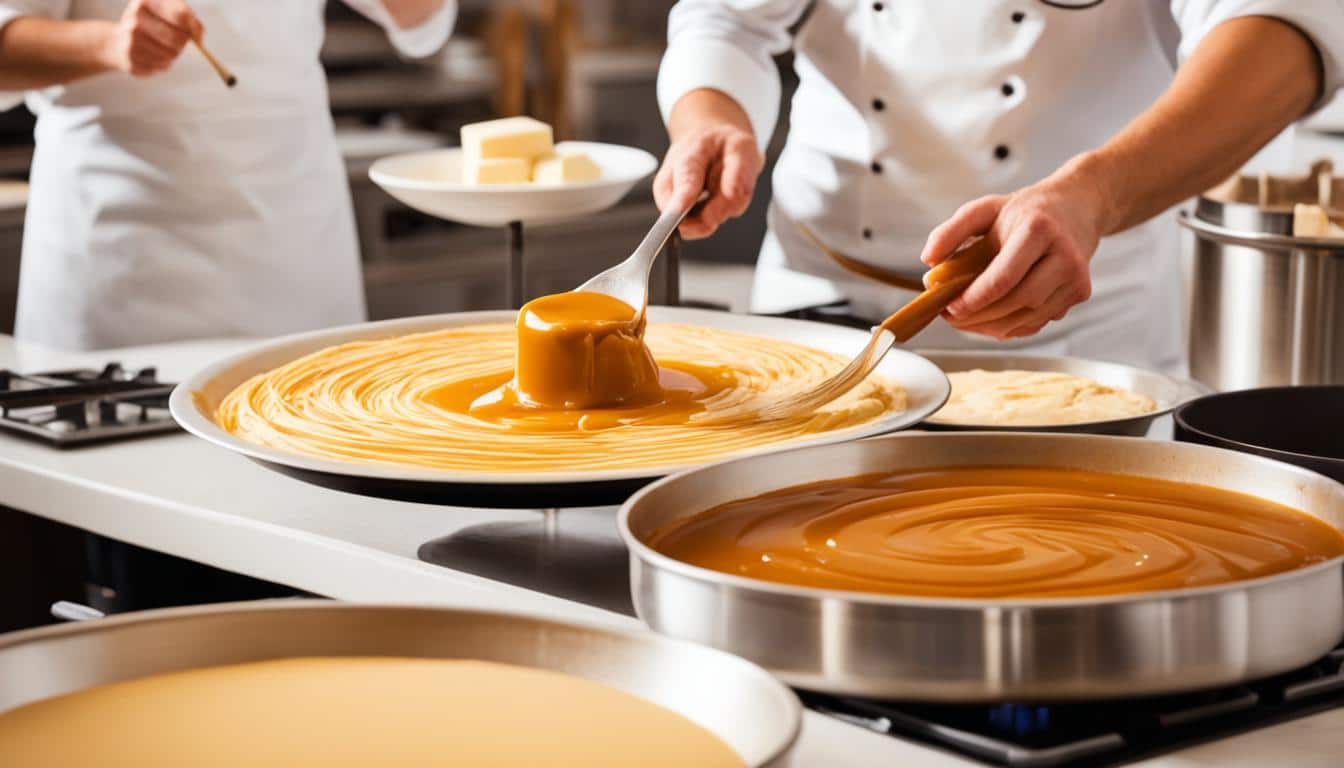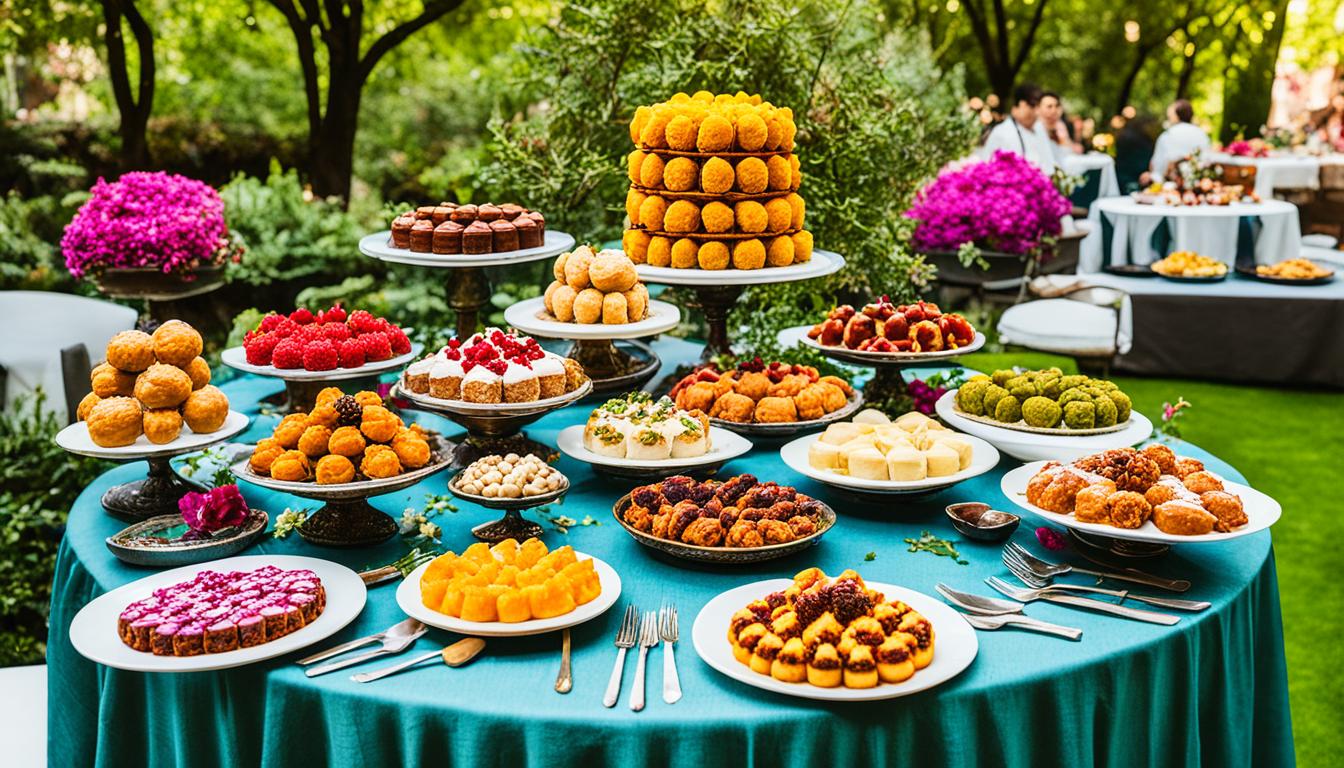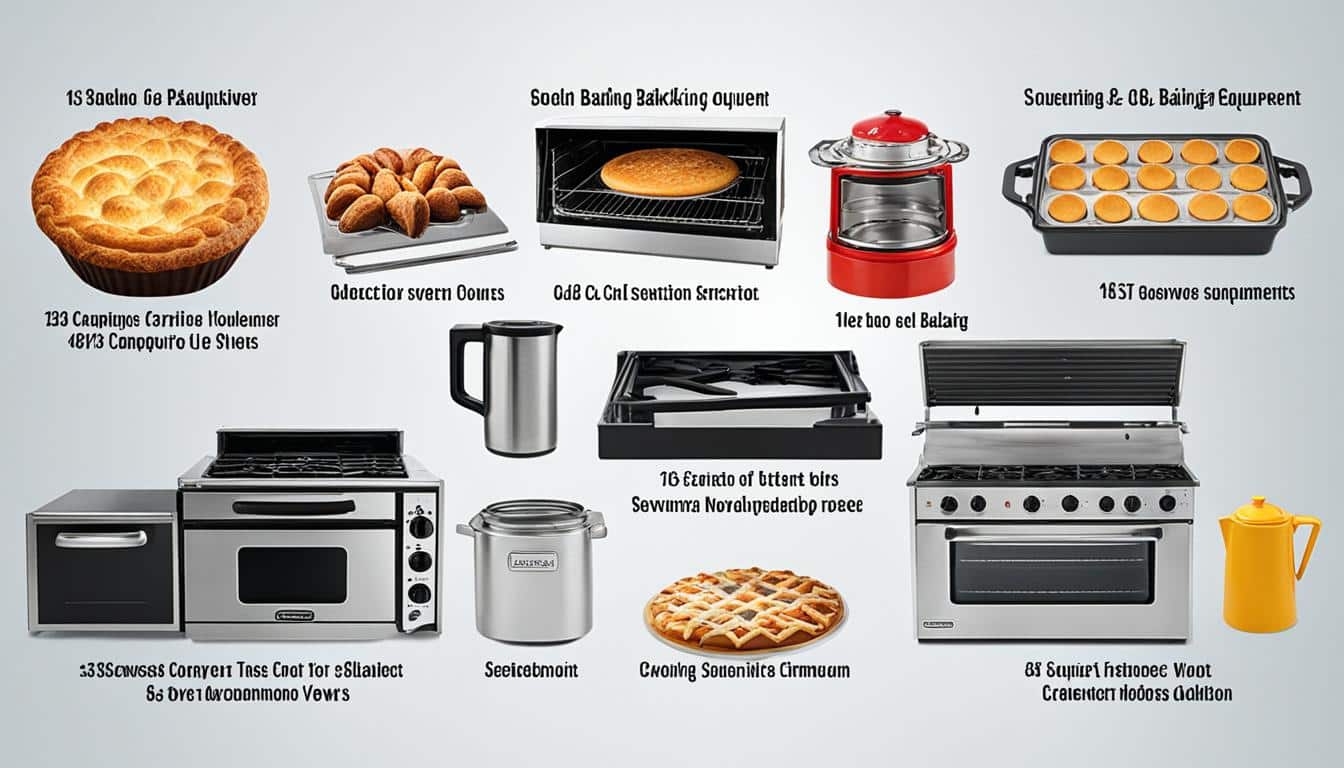
Have you ever bitten into a gooey caramel-filled pastry and been transported to dessert heaven? I certainly have. My name is Sarah, and as an avid baker, I constantly seek new ways to add that irresistible caramel flavor to my sweet creations. However, working with caramel hasn’t always been a walk in the park. It can be a sticky situation, quite literally.
One of my caramel mishaps happened a few years ago when I attempted to bake a caramel apple cake for a friend’s birthday. The recipe called for a caramel glaze that would drizzle beautifully over the cake layers. Excitedly, I started melting the sugar, following the instructions carefully. But as the sugar began to heat up, I noticed it was becoming darker much faster than anticipated. Panic set in, and before I knew it, I was left with a burnt, bitter mess.
Disheartened but determined, I was on a mission to conquer the art of caramel-making. I dove into research, attended workshops, experimented with various recipes, and learned some invaluable techniques along the way. Now, I can confidently say that I’ve mastered the art of baking with caramel, and I’m here to share my knowledge with you.
In this article, I’ll guide you through the different techniques for cooking caramel, whether you prefer the dry or wet method. We’ll explore the chemistry behind caramelization, understanding how temperature and time influence the flavor and texture of caramel. By the end of this article, you’ll be equipped with the skills and knowledge to create perfect caramel-infused desserts every time.
So, let’s dive into the mesmerizing world of caramel and elevate your sweet treats to a whole new sticky and delicious level!
The Basics of Cooking Caramel
When it comes to creating delicious caramel, sugar is the main ingredient. However, adding other ingredients can enhance the flavor and texture of your caramel creation. Common additions include water, butter, cream, and salt. Understanding the two primary methods of cooking caramel, dry and wet caramel, is essential for achieving the perfect result.
Dry Caramel
In the dry caramel method, sugar is heated over medium-high heat until it melts and turns a beautiful golden brown color. This process requires careful monitoring to prevent burning. Dry caramel often results in a firmer consistency suitable for toppings, decorations, and candies.
Wet Caramel
Wet caramel involves adding a liquid, usually water, to the sugar. Cooking the mixture for a longer time allows for deeper flavors to develop. The addition of water makes wet caramel more forgiving to work with, as it slows down the caramelization process and reduces the risk of burning. Wet caramel is perfect for sauces, fillings, and desserts.
Temperature is a critical factor in the caramelization process. Different temperature ranges create varying caramel consistencies, from clear, molten liquid sugar to dark brown, soft and sticky caramel. Achieving the desired caramel color and flavor requires precision and technique.
Making caramel can present challenges, such as the potential for burning and recrystallization. However, with careful monitoring and proper technique, these issues can be overcome.
| Method | Pros | Cons |
|---|---|---|
| Dry Caramel | – Intense flavor – Firmer consistency |
– Requires vigilant monitoring to prevent burning |
| Wet Caramel | – Easier to work with – Deeper flavors |
– Longer cooking time – Risk of recrystallization |
The Chemistry Behind Caramelization
Caramelization is a fascinating chemical reaction that occurs when sugar is heated. This process involves sucrose inversion, where sucrose molecules break down into glucose and fructose. As the temperature increases, these simple sugars undergo further reactions, resulting in the formation of complex, large brown molecules that give caramel its distinct flavor and texture.
But it’s not just the caramel compounds responsible for the delightful taste of caramel. Smaller, volatile molecules also play a crucial role in creating the enticing aroma and flavor profiles. For instance, furan contributes a nutty flavor, maltol adds a toasty note, ethyl acetate imparts fruity flavors, and diacetyl offers a buttery taste.
The caramelization process is influenced by several variables, including the type of sugar used, heat temperature, and cooking time. Different sugars, such as white sugar, brown sugar, or even honey, can produce varying caramel flavors due to their unique compositions. Additionally, the temperature and duration of heating can impact the degree of caramelization, resulting in anything from a light caramel to a dark amber shade.
The Caramelization Process
When sugar is heated, it goes through several stages:
- First, the sugar granules dissolve in water and undergo sucrose inversion, breaking down into glucose and fructose.
- As the temperature increases, caramelization begins. The simple sugars undergo numerous chemical reactions, resulting in the formation of caramel compounds.
- These caramel compounds continue to develop, creating the rich brown color and distinct caramel flavor.
- Finally, the volatile molecules impart their characteristic aromas and tastes, enhancing the overall caramel experience.
It’s important to note that caramelization should not be confused with the Maillard reaction, which is another browning reaction that occurs when sugars react with amino acids. While both processes contribute to the flavors we associate with cooked foods, they are distinct phenomena.
To help you visualize the caramelization process, here’s a simplified table outlining the stages of caramelization:
| Stage | Temperature Range | Caramel Color | Characteristics |
|---|---|---|---|
| 1. Early Caramelization | 160-170°C (320-338°F) | Light golden | Minimal flavor development |
| 2. Medium Caramelization | 170-180°C (338-356°F) | Amber | Rich caramel flavors start to develop |
| 3. Dark Caramelization | 180-190°C (356-374°F) | Dark brown | Intense caramel flavors and aromas |
Understanding the chemistry behind caramelization can help you master the art of cooking caramel and create delectable sweets with rich, sticky caramel flavors.
Conclusion
Successfully baking with caramel requires a solid understanding of caramel techniques and the caramelization process. By applying the right skills and knowledge, you can create irresistible, sweet desserts that are sure to impress.
When working with caramel, maintaining careful control over the temperature is crucial. This ensures that the caramel doesn’t burn and maintains the perfect consistency. Additionally, those using the wet method should be vigilant in preventing recrystallization for smooth results.
Delving into the chemistry behind caramelization reveals the intricate reactions that take place when sugar is heated. These reactions produce the delightful flavors and lush textures we associate with caramel. As you master the art of cooking caramel, you unlock the potential to elevate your desserts and delight your taste buds.








